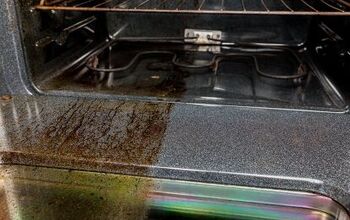How Do I Clean My Septic Tank Naturally?

On average, a septic tank will need to be pumped every three to five years. However, there are other measures you can take that will help extend this time and prevent any backups, clogging or unpleasant odors.
Mix 2 tablespoons of lemon or lemon extract, ¼ cup of baking soda, and ½ cup of vinegar to naturally clean your septic tank. Flush the solution down the drains or use it to clean your plumbing fixtures and it will reach the tank. Put 3-4 rotten tomatoes down the garbage disposal everything 4 months to keep your septic tank naturally clean.
Replacing or repairing a septic tank can be costly, so performing regular maintenance is essential to maintain the health of the system. Save money and ensure that your septic tank continues to run smoothly by engaging in frequent cleanings. Explore the following natural methods for cleaning your septic tank.
Do You Need a Septic Tank Cleaning or Pumping Service?
Get free, zero-commitment quotes from pro contractors near you.

Yeast as a Septic Tank Activator
While there are products on the market such as flushable Live Bacteria Packets from Cabin Obsession or the Rid-X Septic Treatment, there’s a number of DIY methods that you can do yourself for a fraction of the price. One of these treatments is to implement dry yeast into your septic tank.
While the main benefit of the manufactured treatments is the added enzymes, depositing yeast into your toilet once a month is a great way to introduce live cultures into your tank. This is a very popular, homemade and affordable method that does much of what the store-bought products advertise.
Adding yeast into your septic tank will activate enzymes and promote the “good” bacteria that is essential for your septic tank to properly eat away what is dumped into it. While not as comprehensive a solution as Rid-X, it’ll still do the trick. Here are the steps you should follow:
- Bring a ½ gallon of water to a boil and add in 2 cups of sugar.
- Allow the mixture to cool down just so that it is warm to the touch. Keep in mind that 95 degrees is the best temperature for the yeast to multiply. However, this temperature is not warm enough for dry yeast as it will work best in water temperatures that reach between 105 and 110 degrees.
- Mix in 2 cups of cornmeal.
- After this, add 4 packets of dry yeast to the mixture. Wait several minutes for the yeast to completely dissolve.
- Pour this solution into one of your toilets and flush it down!
With this method, it’s recommended to do this before bed or before you’re leaving the house for an extended amount of time. This will help prevent any large amounts of water hitting the septic tank for several hours. For an even simpler method, you can try dropping ½ cup of yeast directly into the toilet, as endorsed by the Farmer’s Almanac.
DIY Baking Soda Septic Tank Cleaning Solution
One of the many easy and affordable ways to take care of your septic system is by using baking soda. This treatment can help save you the hundreds of dollars in frequently needing your septic pumped or even the thousands of dollars it could cost you to replace it.
Baking soda works by mixing with other natural ingredients to serve as an overall environmentally friendly and natural cleaner for your drains, tubs, toilets and sinks. Opting for baking soda instead of chemical cleaners that contain bleach will prevent any of the essential bacteria from being killed off.
As previously mentioned, the good bacteria in your septic system is necessary to help break down waste that is passed through your pipes. Without this essential bacteria, you could experience gross odors, back-ups and clogging. Here’s how to maintain your septic tank with baking soda:
- Mix ¼ cup of baking soda, ½ cup of vinegar and 2 tablespoons of lemon for a homemade natural cleaning solution.
- The baking soda will fizz to help remove tough grime and dirt.
- This natural cleaning agent can be used throughout your home but will work especially well on your tubs, showers, toilets and drains.
- As an added bonus, your septic system will maintain its necessary bacteria and you’ll effectively prevent any harmful effects.
Feed Your Septic System Rotten Tomatoes
If cleaning with baking soda or flushing yeast down your toilet doesn’t appeal to you, consider another way to take care of your septic system by using the old tomatoes found in your fridge. You can do this by adding a few rotting or overripe tomatoes to your garbage disposal while the water is turned on.
Simply take 3-4 rotten tomatoes, every 4 months, and add ½ a tomato at a time down the garbage disposal, allowing it to flush down with the water. The idea here is that you’re introducing good bacteria, by way of fermented tomatoes, into your septic system to help break down waste.
If you do not have a garbage disposal, you could place the rotting tomatoes into a blender or plastic bag and mash them up yourself. Dump the liquified tomatoes into your toilet to achieve the same cleaning effect.
This is a great way to use up some of your old tomatoes that would’ve otherwise been thrown in the trash and maintain the health of your septic tank.
Tips for Keeping Your Septic Mainline Clear
Aside from keeping your septic tank clean, you want to perform regular maintenance on the septic mainline to keep it free of blockages and clogging. One of these tips involves using septic safe toilet paper and reducing the amount of paper material that goes down the drain. To further prevent any backups from occurring, follow these steps:
- Once a month, fill a gallon jug or bucket up with a combination of 50% white distilled vinegar and 50% scalding hot water.
- Before you go to bed or leave the house for work, pour this mixture down the toilet that is nearest to the mainline and flush!
- In the morning or when you return from work, flush again.
- The vinegar and hot water mixture will naturally break up any blockage and melt away any grease that exists in the pipes.
Additional Septic Tank Cleaning Tips
Although there are many different types of septic tanks and systems, they all will experience similar problems when they’re not properly maintained. In addition to implementing natural cleaning treatments, you should always avoid doing the following when you’re on septic.
- DO NOT use strong drain or toilet cleaners that contain ingredients that could be harmful to the good bacteria in your septic. In some cases, using natural toilet cleaners can even harm your septic system. When it comes to borax and vinegar, minimal usage is key. Whereas, cleaners with sulfuric acid, sodium hydroxide, and hydrochloric acid in large amounts will kill the beneficial bacteria. Avoid these chemicals at all costs.
- NEVER add raw or cooked meat to your garbage disposal, toilet or any other method that leads to your septic. The bacteria from meat is not beneficial for your septic system.
- AVOID flushing anything other than toilet paper and waste into your septic system. This includes feminine products, baby diapers, wipes (yes, even the “flushable” kind) and paper towels. While the flushable wipes claim to be septic safe, they actually take a considerable amount of time to break down.
- DO NOT add grease, oils, or fat of any variety to your tank. Grease is not biodegradable and will almost certainly clog your main line.
- NEVER dispose of paint or other liquid remodeling products in your sink, toilet, or septic tank. Products such as varnish, paint thinner, wood stains, paint, and the like, will kill good bacteria in your septic system and contaminate the groundwater.
Signs You Have a Septic Tank Problem
The following are some of the signs that could indicate you have a problem with your septic tank. Keep an eye out for these to avoid larger or more expensive issues down the line.
- Flushing problems. If you have water overflows or your toilet flushes too slowly, this may mean that your septic tank is full and needs to be pumped out.
- Slow draining. In addition to your toilet flushing slowly, your sink, shower, or tub may drain too slow. This is a strong indication of a problem somewhere in your septic system.
- Healthier grass. If you notice greener or healthier grass in the area where your septic tank is buried, this usually means that you have a leak in the septic tank.
- Foul odors. The presence of disgusting odors coming out of your drains is another strong sign that your septic tank either has a blockage or is full.
- Puddles of water. If you have water puddles in your yard or near your drainage field, this often means that there’s a larger issue with the septic system.
All of the above problems should be addressed immediately before they get worse. When in doubt, consider calling out a professional to diagnose the issue with your septic tank and offer a solution.
Do You Need a Septic Tank Cleaning or Pumping Service?
Get free, zero-commitment quotes from pro contractors near you.

Relevant Questions
Some signs that your septic tank may need pumping include unpleasant smells, slow-moving drains, sewer backups, pooling water on your lawn or even a very healthy lawn that indicates a full or leaking system.
What is the best and worst toilet paper when you’re on septic?Toilet paper is considered to be septic safe when it is made of recycled material and is biodegradable. Some of the best toilet paper options for a septic system are Scott-Rapid-Dissolving Toilet Paper, Cottonelle Ultra CleanCare and the Seventh Generation White Toilet Paper. Avoid any toilet paper that contains the terms “quilted,” “soft” or anything made of new wood fibers.
Related Guide

Jessica considers herself a home improvement and design enthusiast. She grew up surrounded by constant home improvement projects and owes most of what she knows to helping her dad renovate her childhood home. Being a Los Angeles resident, Jessica spends a lot of her time looking for her next DIY project and sharing her love for home design.
More by Jessica Stone






















![12 Washing Machine Brands to Avoid [with Recall Data]](https://cdn-fastly.upgradedhome.com/media/2023/07/31/9075781/12-washing-machine-brands-to-avoid-with-recall-data.jpg?size=350x220)




